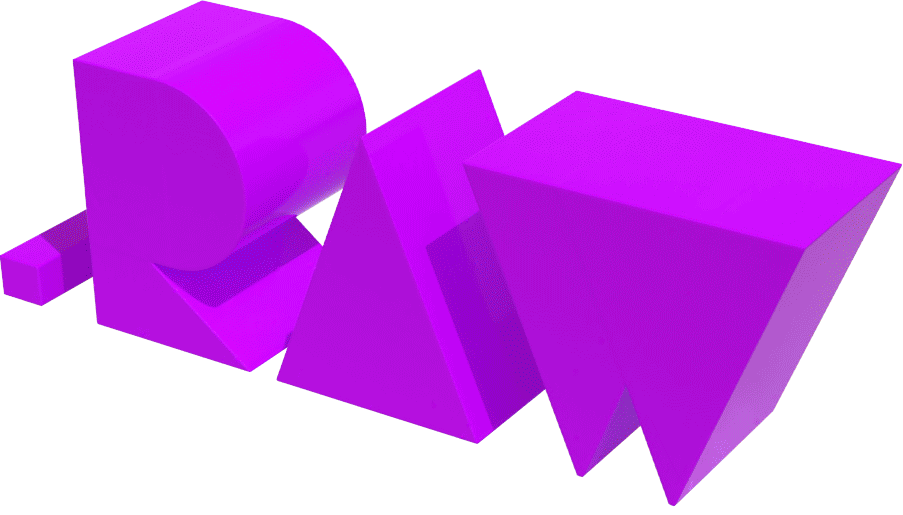
SURFACES
OF PRESENCE
OF PRESENCE
How do digital and physical surfaces orchestrate the sense of presence?
How can we capture the liminal spaces between the physical and the digital in our encounters with surfaces?
How do we design surfaces as spaces of interaction in visual arts, textiles, and architecture?
How can we capture the liminal spaces between the physical and the digital in our encounters with surfaces?
How do we design surfaces as spaces of interaction in visual arts, textiles, and architecture?

An AI-assisted discussion between:
Irina Troitskaya, illustrator, art director, educator
Matt Lee, artist, illustrator, educator; Associate Lecturer at Arts University Bournemouth, University of the Arts London, University of Westminster
Mili Tharakan, digital textiles researcher, artist
Willem de Bruijn, Senior Lecturer and Postgraduate Award Leader - Arts University Bournemouth
Irina Troitskaya, illustrator, art director, educator
Matt Lee, artist, illustrator, educator; Associate Lecturer at Arts University Bournemouth, University of the Arts London, University of Westminster
Mili Tharakan, digital textiles researcher, artist
Willem de Bruijn, Senior Lecturer and Postgraduate Award Leader - Arts University Bournemouth
Moderator: Ksenia Kopalova;
Illustrations below: Stable Diffusion 1.4, prompted by Irina Troitskaya
Illustrations below: Stable Diffusion 1.4, prompted by Irina Troitskaya
Working as an illustrator, what I am interested in is ambiguity - the presence and absence of what you can see and what you can’t, with the interplay with the edges of the image
Ksenia
Could you share a bit of your perspectives: how do you treat the ideas of presence and surfaces in your own practice?
Matt
For me there are two strands to it, stemming, on the one hand, from my practice as a commercial illustrator, and my more recent practice as a contemporary artist - on the other, which has given me a bit more freedom to explore this subject matter. For me as a visual artist, surfaces are about the medium, texture, the size of the work, but also the frame itself, which probably extends to the very idea of context in which the image is shown. When I started out as an illustrator over 20 years ago I was given briefs by art directors - ‘can you make an image for this size? It needs to fit in this column space’, but gradually I came to be interested in ideas that extend outside of that box, creating images that allude to something going on outside the boundaries of the image frame. I think these are the ideas I used to see in Edward Gorey’s work: for instance, someone getting eaten by a large cat outside of the frame, which the viewer can’t see or a moment described in the text that has not yet taken place in the image. Working as an illustrator, what I am interested in is ambiguity - the presence and absence of what you can see and what you can’t, with the interplay with the edges of the image.
In the work that I exhibit though I tend to connect these notions to the idea of memory and the places I have lived. A while ago I made a project which is called ‘Presence of absence’. This project started with my MA, when I was reading a lot of Post-structuralism theory and theory of literary nonsense, which intertwines with how illustration interprets text. I was interested in nonsense in Victorian literature and how these texts maintain a perfect tension or balance between the presence and absence of meaning that can’t be resolved - and this is what I played with a lot in my work.
Ksenia
What you’re saying about the frame, I think, partially intersects with Willem’s work, which seems to also explore the notion of a frame and ask these questions - what do we take as a frame? Can it be the frame of an architectural space, for instance? And if so, how can objects outside of that frame manifest their agency?
Willem
Yes, I am interested in mediums like wallpaper coming to the fore. My background is architecture, interior decoration, design, and fine art. I was trained originally as an architect, but I wasn't really interested in designing whole buildings. I was more interested in the academic side of it and smaller scale projects, where I was trying to understand what architecture can do in relation to the concept of surface. There were architects in the past who made quite a clear distinction between construction and surface, arguing that surfaces are actually the primary means through which architecture creates space. For them construction is secondary. Wallpaper is a good example of that, because the image, or the pattern, is what you really see, and it masks the wall behind it, which is a load bearing construction. But for your experience of the space, that surface is actually more important in comparison to the structure of the whole building.
To be able to experiment with the surfaces that surround me and form an enclosure, I ended up buying a flat, so - I am really interested in how surfaces can create meaning, or the absence of meaning, as Matt was saying.
Could you share a bit of your perspectives: how do you treat the ideas of presence and surfaces in your own practice?
Matt
For me there are two strands to it, stemming, on the one hand, from my practice as a commercial illustrator, and my more recent practice as a contemporary artist - on the other, which has given me a bit more freedom to explore this subject matter. For me as a visual artist, surfaces are about the medium, texture, the size of the work, but also the frame itself, which probably extends to the very idea of context in which the image is shown. When I started out as an illustrator over 20 years ago I was given briefs by art directors - ‘can you make an image for this size? It needs to fit in this column space’, but gradually I came to be interested in ideas that extend outside of that box, creating images that allude to something going on outside the boundaries of the image frame. I think these are the ideas I used to see in Edward Gorey’s work: for instance, someone getting eaten by a large cat outside of the frame, which the viewer can’t see or a moment described in the text that has not yet taken place in the image. Working as an illustrator, what I am interested in is ambiguity - the presence and absence of what you can see and what you can’t, with the interplay with the edges of the image.
In the work that I exhibit though I tend to connect these notions to the idea of memory and the places I have lived. A while ago I made a project which is called ‘Presence of absence’. This project started with my MA, when I was reading a lot of Post-structuralism theory and theory of literary nonsense, which intertwines with how illustration interprets text. I was interested in nonsense in Victorian literature and how these texts maintain a perfect tension or balance between the presence and absence of meaning that can’t be resolved - and this is what I played with a lot in my work.
Ksenia
What you’re saying about the frame, I think, partially intersects with Willem’s work, which seems to also explore the notion of a frame and ask these questions - what do we take as a frame? Can it be the frame of an architectural space, for instance? And if so, how can objects outside of that frame manifest their agency?
Willem
Yes, I am interested in mediums like wallpaper coming to the fore. My background is architecture, interior decoration, design, and fine art. I was trained originally as an architect, but I wasn't really interested in designing whole buildings. I was more interested in the academic side of it and smaller scale projects, where I was trying to understand what architecture can do in relation to the concept of surface. There were architects in the past who made quite a clear distinction between construction and surface, arguing that surfaces are actually the primary means through which architecture creates space. For them construction is secondary. Wallpaper is a good example of that, because the image, or the pattern, is what you really see, and it masks the wall behind it, which is a load bearing construction. But for your experience of the space, that surface is actually more important in comparison to the structure of the whole building.
To be able to experiment with the surfaces that surround me and form an enclosure, I ended up buying a flat, so - I am really interested in how surfaces can create meaning, or the absence of meaning, as Matt was saying.

Stable Diffusion 1.4, prompt: 'absence, borders, yellow reflections, no one, by old masters, muted colours, gritty, grainy'
Ksenia
It looks like this idea of surfaces as what allows one to experience the space, or surfaces as orchestrating encounters, intersects with what Mili is doing in her work with textiles.
Mili
Yes, since I work with interactive textiles and smart textiles, it was interesting for me to expand my toolbox as a maker. With patterns, for instance, I am interested in how I can make them moving, interactive, how I can design the space of that interaction, whether it happens through touch or sound, or anything else. Textiles are a very physical thing: I work with cotton, linen, silk, there’s yarn, there are threads. But when I work with smart textiles, I have more ‘immaterial materials’ if I can say so, like sound, touch, and light, which become parts of my toolbox. I am interested in how we can expand the experience with textiles beyond the experience of wearing fabrics to an experience of interacting with each other through fabrics: not only clothes, but also textiles around us, in our homes. In other words, it is all about how we can use those surfaces to communicate in a more subtle way.
Ksenia
I think this subtlety and ambiguity comes across in the AI-generated images prompted by Irina. Could you share a bit of your process with AI?
Irina
Having worked as a professional illustrator for a very long time, I love all the non-digital media: printmaking, fabrics, everything belonging to the physical world. So I was surprised when I found the process with neural networks interesting. It is hard to expect anything in this process, because it’s a new tool. It gives me a strange open field of varieties, it’s like a parallel world to me. It is always a surprise, and some of the surprises are really pleasant ones. It’s hard to guide a neural network, because it’s like a bunch of monkeys running around. To me it was interesting to find a prompt that would give a nice result, but would not be too specific, because otherwise it produces results that are not as exciting. I kept thinking about prompting as about poetry. I write something like ‘empty places for a brick on the wind, sepia colours, absence’, and then just hope for a magic to happen. In poetry you sometimes have to avoid words, introducing absence. Sometimes I need the AI to generate images of people, or something familiar, but to do that I have to figure out how to not put people into the prompt. So I have to describe the presence through absence. The same goes for prompts for moving image: when I give a prompt, I try to avoid directness and clarity on what and how I want to move, writing instead something like ‘under water’, or ‘sinusoidal wave’, or ‘disappearance’, or ‘dissolving’. So I give the neural network the opportunity to decide what exactly should dissolve or disappear. The best results are usually those where I’m avoiding all the specifics. Apart from that, I use another AI to write prompts for me in the form of a haiku in Japanese, which I also tried in Spanish and in English, and it is interesting for me to see how vaguely these words are linked to the generated imagery.
It looks like this idea of surfaces as what allows one to experience the space, or surfaces as orchestrating encounters, intersects with what Mili is doing in her work with textiles.
Mili
Yes, since I work with interactive textiles and smart textiles, it was interesting for me to expand my toolbox as a maker. With patterns, for instance, I am interested in how I can make them moving, interactive, how I can design the space of that interaction, whether it happens through touch or sound, or anything else. Textiles are a very physical thing: I work with cotton, linen, silk, there’s yarn, there are threads. But when I work with smart textiles, I have more ‘immaterial materials’ if I can say so, like sound, touch, and light, which become parts of my toolbox. I am interested in how we can expand the experience with textiles beyond the experience of wearing fabrics to an experience of interacting with each other through fabrics: not only clothes, but also textiles around us, in our homes. In other words, it is all about how we can use those surfaces to communicate in a more subtle way.
Ksenia
I think this subtlety and ambiguity comes across in the AI-generated images prompted by Irina. Could you share a bit of your process with AI?
Irina
Having worked as a professional illustrator for a very long time, I love all the non-digital media: printmaking, fabrics, everything belonging to the physical world. So I was surprised when I found the process with neural networks interesting. It is hard to expect anything in this process, because it’s a new tool. It gives me a strange open field of varieties, it’s like a parallel world to me. It is always a surprise, and some of the surprises are really pleasant ones. It’s hard to guide a neural network, because it’s like a bunch of monkeys running around. To me it was interesting to find a prompt that would give a nice result, but would not be too specific, because otherwise it produces results that are not as exciting. I kept thinking about prompting as about poetry. I write something like ‘empty places for a brick on the wind, sepia colours, absence’, and then just hope for a magic to happen. In poetry you sometimes have to avoid words, introducing absence. Sometimes I need the AI to generate images of people, or something familiar, but to do that I have to figure out how to not put people into the prompt. So I have to describe the presence through absence. The same goes for prompts for moving image: when I give a prompt, I try to avoid directness and clarity on what and how I want to move, writing instead something like ‘under water’, or ‘sinusoidal wave’, or ‘disappearance’, or ‘dissolving’. So I give the neural network the opportunity to decide what exactly should dissolve or disappear. The best results are usually those where I’m avoiding all the specifics. Apart from that, I use another AI to write prompts for me in the form of a haiku in Japanese, which I also tried in Spanish and in English, and it is interesting for me to see how vaguely these words are linked to the generated imagery.

Stable Diffusion 1.4, prompt: 'Absence, patterns, architecture of the past, yellow reflections, no one, by old masters, muted colours, gritty, grainy'
The magic is more in the absence rather than in the presence
Ksenia
So, in a way, what you are doing is orchestrating the absences. I liked how poetry in your work is what emerges in those gaps, in what is missing.
Matt
I think Irina used the word ‘magic’, and I do agree that the magic is more in the absence rather than in the presence. If I see an image with a piece of poetry next to it, as a viewer I immediately try to make a link between the two, and for me the most interesting part is when I can't quite do that. Or when I go to a gallery and see a piece of art that I look at for 10 minutes instead of 20 seconds, that’s because I’m trying to make sense of it and I can’t quite do that.
Ksenia
And when I’m thinking about your work, Matt, I think there are very specific visual means of telling the poetics of those absences, - through stripping off texture, for instance, or colour, like in ‘Death Landscapes’.
Matt
Yes, as an editorial illustrator I’m used to working with metaphor and communicating a specific idea or context by collaging things together to form meaning. The ‘Death Landscapes’ project was partly about trying to strip that off in some way, to decontextualise something. I’m used to making images that are overloaded with visual symbols, and in ‘Death Landscapes’ I was trying to move away from that and get back to using paper to construct shapes that represent architectural structures that are somehow familiar yet also unfamiliar to me. Those collages about Bangalore, where I used to live, - a place which is always changing, always in flux, - were my attempt to piece together bits of the iconography of that place, making meaning of the place that I don’t really know anymore and express the impermanence of memory and ephemeral qualities of material.
So, in a way, what you are doing is orchestrating the absences. I liked how poetry in your work is what emerges in those gaps, in what is missing.
Matt
I think Irina used the word ‘magic’, and I do agree that the magic is more in the absence rather than in the presence. If I see an image with a piece of poetry next to it, as a viewer I immediately try to make a link between the two, and for me the most interesting part is when I can't quite do that. Or when I go to a gallery and see a piece of art that I look at for 10 minutes instead of 20 seconds, that’s because I’m trying to make sense of it and I can’t quite do that.
Ksenia
And when I’m thinking about your work, Matt, I think there are very specific visual means of telling the poetics of those absences, - through stripping off texture, for instance, or colour, like in ‘Death Landscapes’.
Matt
Yes, as an editorial illustrator I’m used to working with metaphor and communicating a specific idea or context by collaging things together to form meaning. The ‘Death Landscapes’ project was partly about trying to strip that off in some way, to decontextualise something. I’m used to making images that are overloaded with visual symbols, and in ‘Death Landscapes’ I was trying to move away from that and get back to using paper to construct shapes that represent architectural structures that are somehow familiar yet also unfamiliar to me. Those collages about Bangalore, where I used to live, - a place which is always changing, always in flux, - were my attempt to piece together bits of the iconography of that place, making meaning of the place that I don’t really know anymore and express the impermanence of memory and ephemeral qualities of material.

Matt Lee, ‘Death Landscapes III’
Between the presence and absence there is an in-between space, it is not just a binary.
Willem
As you were talking, I recalled a work by a Swedish artist Jonas Dahlberg, who was also trained as an architect but then became an artist. He did a project where he covered a building in Stockholm that was going to be demolished, with a black cloth. The effect was that the building ‘disappeared’, not just during the night, but even during the day - it was like a black hole, an absence. But also, it’s a very strong presence of that blackness. It’s very ambiguous. I think it comments on, or even critiques, a common notion in architecture that light is what gives an architectural object its presence: without the light it couldn’t be there, it would be impossible to navigate it, etc. Light has always been extremely important to architecture - as well as photography, and other disciplines. More recently though, people have been trying to deconstruct this idea and look for the aspects of architecture that are not about light - but are more about texture, tactility, which has been neglected for a long time, especially in modernist language.
I think Matt’s collages make a similar comment, and it connects to Mili’s textiles, since the primary means of experiencing textiles is touch. I think there is a lot in common here, since architecture is something that is not meant to be contemplated, but, as Walter Benjamin wrote about it, experienced in a state of distraction, which means it tends to be moved into the background. It’s not consciously perceived, it doesn’t get that concentrated mode of attention. And it’s the same with textiles. For Benjamin, architecture and textiles are primarily perceived through touch, which counters the obsession with the image, which to a large extent is still the case, especially now, in the age of Instagram. Architects can not produce a building that is not instagrammable - it has to be, and it is a very problematic situation. So I love this connection between architecture and textiles.
Mili
And one of the earliest forms of architecture was textile architecture - with tents, etc. What I find interesting is the blurring of the boundaries between light and dark. There’s a Japanese concept called utsuroi which is all about transitioning from one stage to another. For example, the transitioning state between deep sleep and being awake is very interesting, because that is where the ‘magic’ of lucid dreams happens. What I am trying to do through my work is capture that transition between states, and I use textiles and technology to enable that. I try to blur the boundaries of what technology looks like and feels like, by making it invisibly intertwined with the environment: our clothing and fabrics that surround us. You only realise that there’s technology when you interact with it. That’s why I think between the presence and absence there is an in-between space, it is not just a binary. There is a researcher called Mark Weiser who talks about the most profound technologies as of those that disappear into the fabric of our everyday lives until they are indistinguishable from it, and in my work with textiles I decided to take this idea literally.
Willem
I find that interesting in relation to Irina’s work when she’s talking about the notion of prompt. It seems as if AI has come to reconfigure the relationship to imagination and what creativity may look like in an interaction with a machine. I find it intriguing that it implies that there’s this work of prompting, which also somehow sits in this in-between space. The idea of a prompt really comes to the fore in this process, which wasn’t the case before.
As you were talking, I recalled a work by a Swedish artist Jonas Dahlberg, who was also trained as an architect but then became an artist. He did a project where he covered a building in Stockholm that was going to be demolished, with a black cloth. The effect was that the building ‘disappeared’, not just during the night, but even during the day - it was like a black hole, an absence. But also, it’s a very strong presence of that blackness. It’s very ambiguous. I think it comments on, or even critiques, a common notion in architecture that light is what gives an architectural object its presence: without the light it couldn’t be there, it would be impossible to navigate it, etc. Light has always been extremely important to architecture - as well as photography, and other disciplines. More recently though, people have been trying to deconstruct this idea and look for the aspects of architecture that are not about light - but are more about texture, tactility, which has been neglected for a long time, especially in modernist language.
I think Matt’s collages make a similar comment, and it connects to Mili’s textiles, since the primary means of experiencing textiles is touch. I think there is a lot in common here, since architecture is something that is not meant to be contemplated, but, as Walter Benjamin wrote about it, experienced in a state of distraction, which means it tends to be moved into the background. It’s not consciously perceived, it doesn’t get that concentrated mode of attention. And it’s the same with textiles. For Benjamin, architecture and textiles are primarily perceived through touch, which counters the obsession with the image, which to a large extent is still the case, especially now, in the age of Instagram. Architects can not produce a building that is not instagrammable - it has to be, and it is a very problematic situation. So I love this connection between architecture and textiles.
Mili
And one of the earliest forms of architecture was textile architecture - with tents, etc. What I find interesting is the blurring of the boundaries between light and dark. There’s a Japanese concept called utsuroi which is all about transitioning from one stage to another. For example, the transitioning state between deep sleep and being awake is very interesting, because that is where the ‘magic’ of lucid dreams happens. What I am trying to do through my work is capture that transition between states, and I use textiles and technology to enable that. I try to blur the boundaries of what technology looks like and feels like, by making it invisibly intertwined with the environment: our clothing and fabrics that surround us. You only realise that there’s technology when you interact with it. That’s why I think between the presence and absence there is an in-between space, it is not just a binary. There is a researcher called Mark Weiser who talks about the most profound technologies as of those that disappear into the fabric of our everyday lives until they are indistinguishable from it, and in my work with textiles I decided to take this idea literally.
Willem
I find that interesting in relation to Irina’s work when she’s talking about the notion of prompt. It seems as if AI has come to reconfigure the relationship to imagination and what creativity may look like in an interaction with a machine. I find it intriguing that it implies that there’s this work of prompting, which also somehow sits in this in-between space. The idea of a prompt really comes to the fore in this process, which wasn’t the case before.

Stable Diffusion 1.4, prompt: 'Decontextualise, ochre reflections, opposite paper, muted colours, gritty, grainy, by old masters'
Ksenia
Prompts can really be a space of uncertainty. The burst of blackness that we see in the image above, for instance, is both destructive, attractive, and constructive.
Willem
And what strikes me is that they are very Turner-esque. He was the painter of absence, depicting all things intangible.
Irina
Just in case, I am not using his name in the prompt.
Willem
I know, but he is with us, as a ghost, in his haunting presence.
Prompts can really be a space of uncertainty. The burst of blackness that we see in the image above, for instance, is both destructive, attractive, and constructive.
Willem
And what strikes me is that they are very Turner-esque. He was the painter of absence, depicting all things intangible.
Irina
Just in case, I am not using his name in the prompt.
Willem
I know, but he is with us, as a ghost, in his haunting presence.

Stable Diffusion 1.4, prompt: 'Textile, yellow reflections, someone, by old masters, muted colours, gritty, grainy'
Ksenia
We can try making it a spirit medium seance, inviting Turner’s ghost with AI! What I’m thinking about though, is that this ghostly presence and ghostly encounters is fairly easy for me to imagine with digital textiles, AI, or visual art, but with architecture I’m struggling a bit more since it’s so material.
Willem
In the wallpaper project that I did, I used images that ‘haunt’ me. I find them intriguing, they keep coming back to me. The hypothesis was that if I surround myself with these images in my everyday life, maybe that will break the spell they cast upon me. The architecture featured in these images is that which I first came across being introduced to them as a student. So the obsession with certain architecture starts with the image: its grainy texture and materiality. My method of coming to terms with this obsession was exaggerating it, bringing it to an excess, when it starts repeating itself, - similarly to what Andy Warhol was doing. But the risk is, of course, that of the image eventually disappearing in that excess. So this project was an experiment in what happens when presence is taken to an extreme.
We can try making it a spirit medium seance, inviting Turner’s ghost with AI! What I’m thinking about though, is that this ghostly presence and ghostly encounters is fairly easy for me to imagine with digital textiles, AI, or visual art, but with architecture I’m struggling a bit more since it’s so material.
Willem
In the wallpaper project that I did, I used images that ‘haunt’ me. I find them intriguing, they keep coming back to me. The hypothesis was that if I surround myself with these images in my everyday life, maybe that will break the spell they cast upon me. The architecture featured in these images is that which I first came across being introduced to them as a student. So the obsession with certain architecture starts with the image: its grainy texture and materiality. My method of coming to terms with this obsession was exaggerating it, bringing it to an excess, when it starts repeating itself, - similarly to what Andy Warhol was doing. But the risk is, of course, that of the image eventually disappearing in that excess. So this project was an experiment in what happens when presence is taken to an extreme.

Willem de Bruijn, 2022-2023, Wallpaper project
Ksenia
And also it’s interesting how with wallpapers the flatness of the image diminishes to almost zero, like in a 3d scan, where, while rotating the model, you realise that the scanned surface does not really ‘exist’, it’s a mathematical abstraction. The intimacy of an encounter with a surface also lies in the fact that this abstraction is always evasive, almost disappearing. In this respect it’s interesting to see how those intimate encounters are organised in textiles.
Mili
I think textiles allow using a language that we are all familiar with. It gives everyone a starting point, and it’s interesting to add an extra layer to that experience. Textiles can capture memories, tell stories, especially when it’s hand made, since we know that someone actually spent time with it. And if there’s a way to make these stories communicate in a more active way, across distances, that, I think, heightened what textiles can do. One of the projects that I did involved creating two rugs to be placed in two different homes. And when I walk one rug, the other rug starts showing my movement. It’s a ghostly, subtle presence of technology - unlike, let’s say, a phone call, which is a very overt and direct way of using technology. It’s meant to be a poetic way to say to another person ‘I’m thinking of you’, ‘I’m here’, ‘I’m with you’. Textiles already have a specific language, and technology can be a way to heighten that communication.
Willem
It’s like a ‘magic carpet’ in the sense of transporting you to another place!
And also it’s interesting how with wallpapers the flatness of the image diminishes to almost zero, like in a 3d scan, where, while rotating the model, you realise that the scanned surface does not really ‘exist’, it’s a mathematical abstraction. The intimacy of an encounter with a surface also lies in the fact that this abstraction is always evasive, almost disappearing. In this respect it’s interesting to see how those intimate encounters are organised in textiles.
Mili
I think textiles allow using a language that we are all familiar with. It gives everyone a starting point, and it’s interesting to add an extra layer to that experience. Textiles can capture memories, tell stories, especially when it’s hand made, since we know that someone actually spent time with it. And if there’s a way to make these stories communicate in a more active way, across distances, that, I think, heightened what textiles can do. One of the projects that I did involved creating two rugs to be placed in two different homes. And when I walk one rug, the other rug starts showing my movement. It’s a ghostly, subtle presence of technology - unlike, let’s say, a phone call, which is a very overt and direct way of using technology. It’s meant to be a poetic way to say to another person ‘I’m thinking of you’, ‘I’m here’, ‘I’m with you’. Textiles already have a specific language, and technology can be a way to heighten that communication.
Willem
It’s like a ‘magic carpet’ in the sense of transporting you to another place!
In the digital space, everything is scaleless, which means that spatial imagination is not being activated on the level of scale.
Ksenia
Yes, and also - we often tend to think of the digital as something intangible, abstract, but here it becomes something that really mediates physical presence and those bodily experiences. I was wondering if digital can have a similar effect in architecture?
Willem
One of the things that is problematic when it comes to the relationship between the digital and the physical in architecture, is the notion of scale. When I teach, I see this on a day-to-day basis: as soon as students work in architecture software, they start designing the buildings of which they have no sense of scale. In the digital space, everything is scaleless. It creates a real problem when you ask to design something that people will actually use and inhabit. This means that architectural imagination, spatial imagination is not being activated on the level of scale. For instance, I have students that prompt AI to generate incredible images of buildings. Yes, AI can do that, but these buildings are without scale! That translation into the physical is not one that is self-evident. When you need to make a model in a particular scale, you almost have to start all over again, from scratch. Nevertheless, digital creation is what the world now wants. But look at what’s happening: look at places like Dubai, which lose all sense of proportion and scale.
Ksenia
And it is not only about scale, but also weight. When I was working with photogrammetry archives, I noticed that they show objects of various scale and weight as if they were objects of a similar order: a church, a skyscraper, a cat, or someone’s grandad would be equally sizeless and weightless. It made me think about the specifics of digital physicality, since there clearly is one, - with all the haptic control that is available when rotating and manipulating these models. What kind of bodies are these - the ones that we manipulate in that 3d space, and what kind of a body do I have in that space, if a cat is no different from a building?
Mili
Talking about weight and materiality, I think in textiles and fashion people work really hard to capture that in the digital twin of a garment or a fabric. You can really feel the weight of the material.
I am also thinking about bringing absence to presence. For example, a friend of mine did a project where people who had hearing difficulties wore a suit, where through the vibrations of the suit they could experience a whole orchestra. It was amazing to witness their reaction, since textiles, garment allowed them to experience what they have never experienced before.
Matt
When it comes to the digital, I’m also thinking about the museum context. I work at the British Library where we digitise material, making collection items available for researchers to access remotely. The aim is to create an authentic digital surrogate. In this process the lighting, camera equipment and setup is incredibly important, there’s a whole science to imaging standards - to replicate exactly what you see with your eyes for the screen. There’s a lot of attention given to capturing the true colour and details - the condition of the binding, the way a map unfolds etc. But there’s a limitation to it, which is the online portal itself, that can be difficult or slow to navigate and the screen becomes a barrier to that experience.
Yes, and also - we often tend to think of the digital as something intangible, abstract, but here it becomes something that really mediates physical presence and those bodily experiences. I was wondering if digital can have a similar effect in architecture?
Willem
One of the things that is problematic when it comes to the relationship between the digital and the physical in architecture, is the notion of scale. When I teach, I see this on a day-to-day basis: as soon as students work in architecture software, they start designing the buildings of which they have no sense of scale. In the digital space, everything is scaleless. It creates a real problem when you ask to design something that people will actually use and inhabit. This means that architectural imagination, spatial imagination is not being activated on the level of scale. For instance, I have students that prompt AI to generate incredible images of buildings. Yes, AI can do that, but these buildings are without scale! That translation into the physical is not one that is self-evident. When you need to make a model in a particular scale, you almost have to start all over again, from scratch. Nevertheless, digital creation is what the world now wants. But look at what’s happening: look at places like Dubai, which lose all sense of proportion and scale.
Ksenia
And it is not only about scale, but also weight. When I was working with photogrammetry archives, I noticed that they show objects of various scale and weight as if they were objects of a similar order: a church, a skyscraper, a cat, or someone’s grandad would be equally sizeless and weightless. It made me think about the specifics of digital physicality, since there clearly is one, - with all the haptic control that is available when rotating and manipulating these models. What kind of bodies are these - the ones that we manipulate in that 3d space, and what kind of a body do I have in that space, if a cat is no different from a building?
Mili
Talking about weight and materiality, I think in textiles and fashion people work really hard to capture that in the digital twin of a garment or a fabric. You can really feel the weight of the material.
I am also thinking about bringing absence to presence. For example, a friend of mine did a project where people who had hearing difficulties wore a suit, where through the vibrations of the suit they could experience a whole orchestra. It was amazing to witness their reaction, since textiles, garment allowed them to experience what they have never experienced before.
Matt
When it comes to the digital, I’m also thinking about the museum context. I work at the British Library where we digitise material, making collection items available for researchers to access remotely. The aim is to create an authentic digital surrogate. In this process the lighting, camera equipment and setup is incredibly important, there’s a whole science to imaging standards - to replicate exactly what you see with your eyes for the screen. There’s a lot of attention given to capturing the true colour and details - the condition of the binding, the way a map unfolds etc. But there’s a limitation to it, which is the online portal itself, that can be difficult or slow to navigate and the screen becomes a barrier to that experience.
Books and other archive objects always become available for scholars in the absence of the actual objects
Willem
Do you think there’s a limitation in the way technology creates a sort of hyper-presence, visually speaking? You’re talking about the grain of the leather, the binding, etc - so you get a heightened presence of that in the digital, but other things tend to be discarded: information about smell, tactility, weight. It speaks of that seduction, which is primarily, or purely, visual. Does it not skew the way in which the book becomes available for research?
Matt
Yes, you don’t always get the sense of the true condition of the item, the slow rotting of the paper, the reddish dust it leaves on your hands, you don’t see the watermarks, which indicate the origins of the paper – this is an area of research and knowledge that is lost, since we’re not normally capturing the object with any backlighting. So it’s an effective tool purely in terms of surface content. But working with materials, smells, and working, as I do in my work, in the margins, is an area of restriction. In the library's collection we have huge tightly bound items, and sometimes it is impossible to access text in the gutter unless you disbind the item, so even in these digital collections there are absences, because it is not physically possible to photographically capture all the information. There’s a duality to it: for the preservation of collection items, it is good when people don’t touch them, when they stay in the basement for decades, because they are not getting damaged through use. But also, of course, it’s a little sad because the objects can’t fulfil their purpose.
Willem
It means that the books - or whatever other archive objects - always become available in the absence of the actual object. And that’s where it affects meaning - meaning in the absence of the actual thing. That really throws up some questions on how we construct narratives and meanings, if we do it on the basis of categorical absence. A good example is a book of miniatures by Limbourg brothers, which exists in a number of facsimile forms that have exquisitely been produced for study, simply because nobody’s allowed to see the original - for who knows how long. It means that the whole scholarship around this object is based on this strange absence.
Do you think there’s a limitation in the way technology creates a sort of hyper-presence, visually speaking? You’re talking about the grain of the leather, the binding, etc - so you get a heightened presence of that in the digital, but other things tend to be discarded: information about smell, tactility, weight. It speaks of that seduction, which is primarily, or purely, visual. Does it not skew the way in which the book becomes available for research?
Matt
Yes, you don’t always get the sense of the true condition of the item, the slow rotting of the paper, the reddish dust it leaves on your hands, you don’t see the watermarks, which indicate the origins of the paper – this is an area of research and knowledge that is lost, since we’re not normally capturing the object with any backlighting. So it’s an effective tool purely in terms of surface content. But working with materials, smells, and working, as I do in my work, in the margins, is an area of restriction. In the library's collection we have huge tightly bound items, and sometimes it is impossible to access text in the gutter unless you disbind the item, so even in these digital collections there are absences, because it is not physically possible to photographically capture all the information. There’s a duality to it: for the preservation of collection items, it is good when people don’t touch them, when they stay in the basement for decades, because they are not getting damaged through use. But also, of course, it’s a little sad because the objects can’t fulfil their purpose.
Willem
It means that the books - or whatever other archive objects - always become available in the absence of the actual object. And that’s where it affects meaning - meaning in the absence of the actual thing. That really throws up some questions on how we construct narratives and meanings, if we do it on the basis of categorical absence. A good example is a book of miniatures by Limbourg brothers, which exists in a number of facsimile forms that have exquisitely been produced for study, simply because nobody’s allowed to see the original - for who knows how long. It means that the whole scholarship around this object is based on this strange absence.

Stable Diffusion 1.4, prompt: 'Decontextualise, yellow reflections, someone, by old masters, muted colours, gritty, grainy'
Matt
I find that idea of a facsimile interesting as well, and how often reproductions are used in exhibitions. I saw examples around the time of the Covid-19 pandemic where museums intended to display a painting, but at that time it might have not been able to travel across or was delayed. In its place there would be a small print copy of what the curators intended to show, highlighting its absence. Last year I went to the Natural History Museum to see an exhibition called ‘Titanosaur: Life as the Biggest Dinosaur’. For the most part, the exhibition was a series of interactive screens, where you learn about the dinosaur through tasks, where you have to keep the dinosaur safe from predators, the environment etc - It was really engaging. And then at the end of the exhibition you go around the corner to see the dinosaur skeleton, only to discover that these are not the real bones, it’s a life-size replica. It’s kind of impressive, but also kind of not. The absence of the true or original artefact is something we see quite often in museums, sometimes without us knowing. It’s not always transparent or clear.
I find that idea of a facsimile interesting as well, and how often reproductions are used in exhibitions. I saw examples around the time of the Covid-19 pandemic where museums intended to display a painting, but at that time it might have not been able to travel across or was delayed. In its place there would be a small print copy of what the curators intended to show, highlighting its absence. Last year I went to the Natural History Museum to see an exhibition called ‘Titanosaur: Life as the Biggest Dinosaur’. For the most part, the exhibition was a series of interactive screens, where you learn about the dinosaur through tasks, where you have to keep the dinosaur safe from predators, the environment etc - It was really engaging. And then at the end of the exhibition you go around the corner to see the dinosaur skeleton, only to discover that these are not the real bones, it’s a life-size replica. It’s kind of impressive, but also kind of not. The absence of the true or original artefact is something we see quite often in museums, sometimes without us knowing. It’s not always transparent or clear.

Stable Diffusion 1.4, prompt: 'Dinosaur, absence and presence, unreal reality, by old masters'
If there is something that we haven’t yet found words for, that is where ‘magic’ happens
Armand
Getting back a bit to what we discussed about facsimile earlier, and looking at the images Irina is showing, I’m imagining a whole collection in a museum being replaced by AI ‘facsimiles’ of Turner, and any other painting. What kind of an eerie presence would that create!
Irina
It is happening right now. There are real cases when art critics do take AI generated imagery for a real historical thing, and some people are already raising concerns over that.
On another note, thanks everyone for mentioning ‘magic’ so often, since what I find interesting is our reliance on words. If there is something that we haven’t yet found words for, that is where ‘magic’ happens, and as soon as someone finds words for it, it becomes very rigid again. Sometimes words lose sense - for instance, when we repeat a word to an extent that we can no longer associate it with a specific meaning - which is a bizarre, ‘magical’ experience that is hard to grasp in words - it’s as if you are falling into a hole. And I’m sure somebody has already explained and named it somehow, by the way.
With any AI-generated imagery there is also an interesting subsequent process of choosing the prompts and results that worked and that didn’t.
Willem
I’m curious to know more about your curation and selection process: what kind of criteria do you use to identify what was successful and what was not?
Irina
I think I’m looking for some sort of mismatch. Something that’s wrong, but wrong in the right way. Sometimes AI ‘fails’ only just because my prompts are intentionally contradictory: ‘absence of presence’, ‘unreal reality, multiple sources of light’. If I were given such an assignment, I’d say, ‘What?!...’ The beauty of AI though is that it has to produce some result, there is no way it can’t. I mainly reject the images that remind me too much of something I’d already seen. For example, there is a library of artists that AIs are trained on, and sometimes they are too recognisable.
Getting back a bit to what we discussed about facsimile earlier, and looking at the images Irina is showing, I’m imagining a whole collection in a museum being replaced by AI ‘facsimiles’ of Turner, and any other painting. What kind of an eerie presence would that create!
Irina
It is happening right now. There are real cases when art critics do take AI generated imagery for a real historical thing, and some people are already raising concerns over that.
On another note, thanks everyone for mentioning ‘magic’ so often, since what I find interesting is our reliance on words. If there is something that we haven’t yet found words for, that is where ‘magic’ happens, and as soon as someone finds words for it, it becomes very rigid again. Sometimes words lose sense - for instance, when we repeat a word to an extent that we can no longer associate it with a specific meaning - which is a bizarre, ‘magical’ experience that is hard to grasp in words - it’s as if you are falling into a hole. And I’m sure somebody has already explained and named it somehow, by the way.
With any AI-generated imagery there is also an interesting subsequent process of choosing the prompts and results that worked and that didn’t.
Willem
I’m curious to know more about your curation and selection process: what kind of criteria do you use to identify what was successful and what was not?
Irina
I think I’m looking for some sort of mismatch. Something that’s wrong, but wrong in the right way. Sometimes AI ‘fails’ only just because my prompts are intentionally contradictory: ‘absence of presence’, ‘unreal reality, multiple sources of light’. If I were given such an assignment, I’d say, ‘What?!...’ The beauty of AI though is that it has to produce some result, there is no way it can’t. I mainly reject the images that remind me too much of something I’d already seen. For example, there is a library of artists that AIs are trained on, and sometimes they are too recognisable.

Stable Diffusion 1.4, prompt: 'Repetition, single sources, by old masters'
Irina
I am also interested in animating the resulting images in quite a specific way, when I only use physics, maths, or geometry, to refer to the character of movement. I can also use other moving images to refer to the character of the movement, but AI may decide to displace the effect: for instance, if a reference shows moving fabric, AI may apply that kind of movement to a mass of green in the picture above, which I identify as tree leaves.
I repeat the procedure several times until I see something which is a bit ‘unreal’, something that does not match the expectations. I am interested in making things strange, making things unrecognisable.
Ksenia
When I'm looking at the image above I definitely imagine it as fabric, a digital one, weightless and sizeless. It’s exciting that the digital realm reintroduces ambiguity, ‘magic’ of our encounters with others’ presences, with surfaces, others’ intimacies. The digital, which is thought to be ‘calculated’, ‘precize’, and ‘perfect’ can be a space of those mysterious, magical encounters - ghostly, eerie, and poetic.
I am also interested in animating the resulting images in quite a specific way, when I only use physics, maths, or geometry, to refer to the character of movement. I can also use other moving images to refer to the character of the movement, but AI may decide to displace the effect: for instance, if a reference shows moving fabric, AI may apply that kind of movement to a mass of green in the picture above, which I identify as tree leaves.
I repeat the procedure several times until I see something which is a bit ‘unreal’, something that does not match the expectations. I am interested in making things strange, making things unrecognisable.
Ksenia
When I'm looking at the image above I definitely imagine it as fabric, a digital one, weightless and sizeless. It’s exciting that the digital realm reintroduces ambiguity, ‘magic’ of our encounters with others’ presences, with surfaces, others’ intimacies. The digital, which is thought to be ‘calculated’, ‘precize’, and ‘perfect’ can be a space of those mysterious, magical encounters - ghostly, eerie, and poetic.
